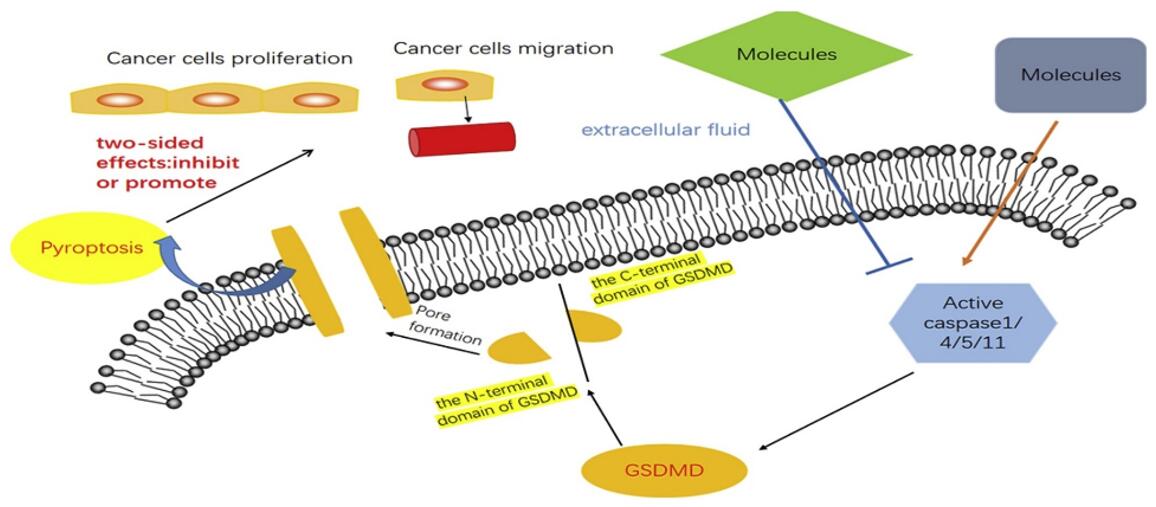Pyroptosis, a caspase-dependent inflammatory cell death, is marked by pore formation, cell swelling, plasma membrane rupture, and the release of intracellular contents.
 Figure 1. Pyroptosis: A new frontier in cancer. [1]
Figure 1. Pyroptosis: A new frontier in cancer. [1]
Pyroptosis is distinguished by the N-terminal cleavage of Gasdermin D (GSDMD), leading to its oligomerization and the formation of a lytic pore in the plasma membrane. This cleavage event is mediated by inflammatory caspases 1, 4, 5, and 11, distinct from those involved in apoptosis. Monitoring the cleavage of GSDMD and its related family members, along with these specific inflammatory caspases, is essential for a comprehensive study of pyroptosis. Recent studies have revealed that pyroptosis, influenced by non-coding RNAs and various molecules, plays a pivotal role in regulating the proliferation, invasion, and metastasis of tumors.
Creative Bioarray offers an advanced pyroptosis assay, a state-of-the-art solution for exploring and understanding the intricate mechanisms of pyroptosis in cancer cells. Our assay provides a robust platform to investigate pyroptosis induction and its impact on various cancer cell types.
References:
1. Fang Y, Tian S, Pan Y, et al. Pyroptosis: A new frontier in cancer. Biomed Pharmacother. 2020;121:109595. doi:10.1016/j.biopha.2019.109595
2. Wang S, Liu Y, Zhang L, Sun Z. Methods for monitoring cancer cell pyroptosis [published online ahead of print, 2021 Dec 22]. Cancer Biol Med. 2021;19(4):398-414. doi:10.20892/j.issn.2095-3941.2021.0504
Online Inquiry